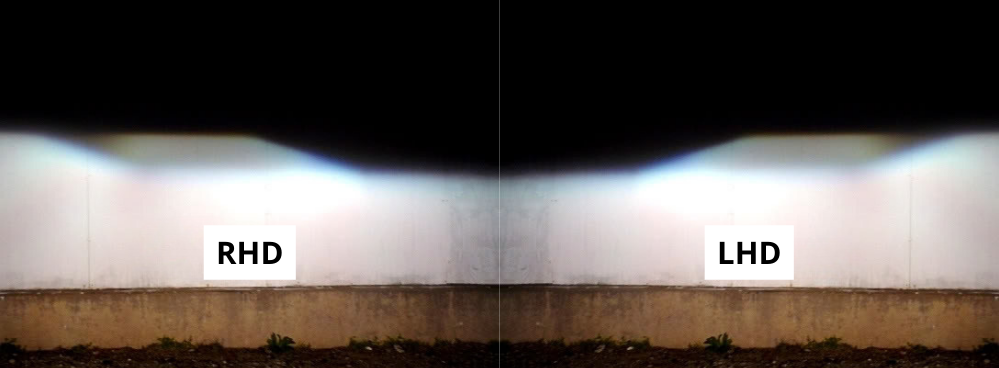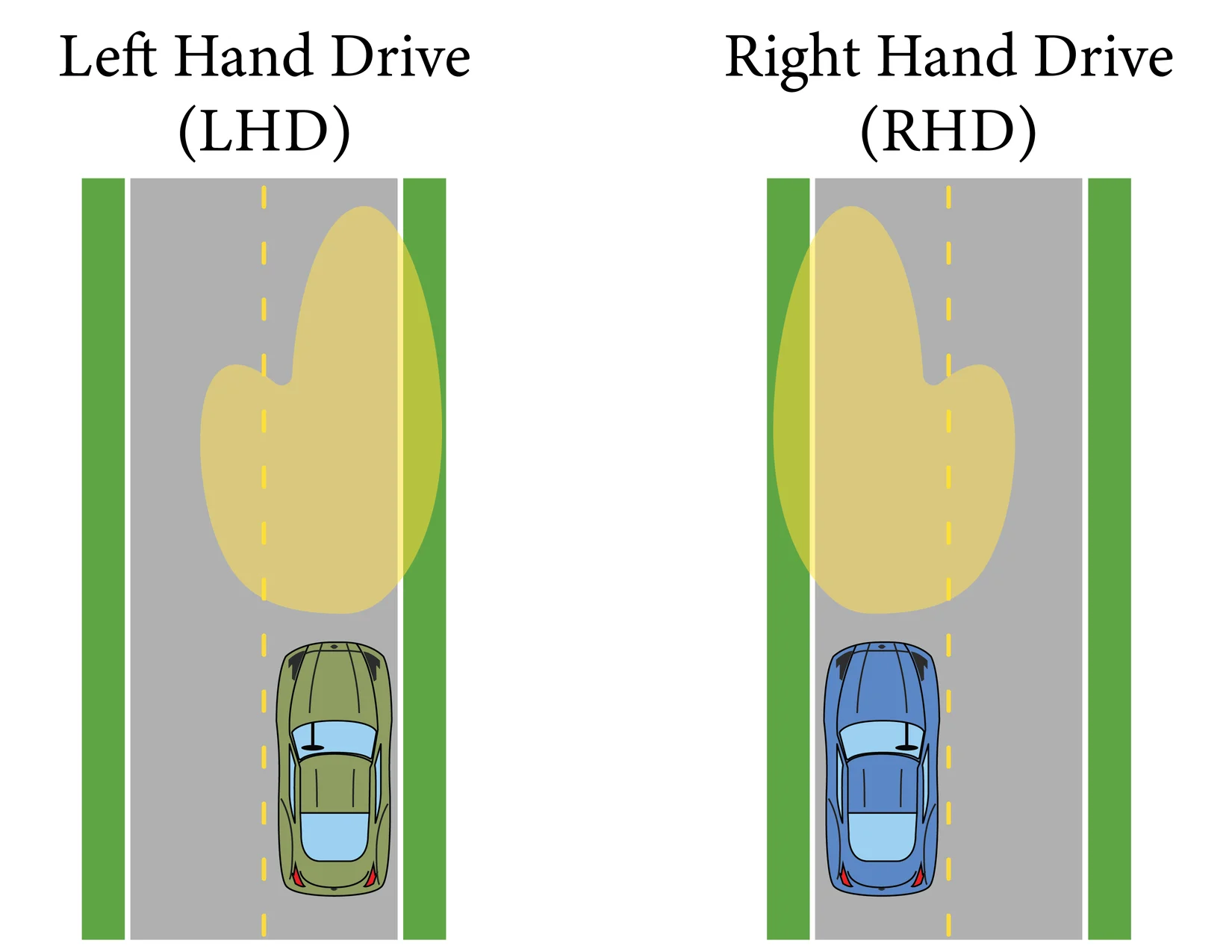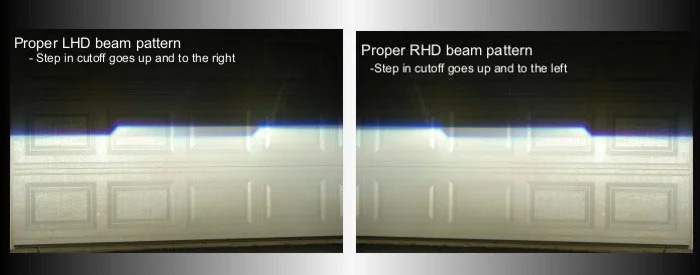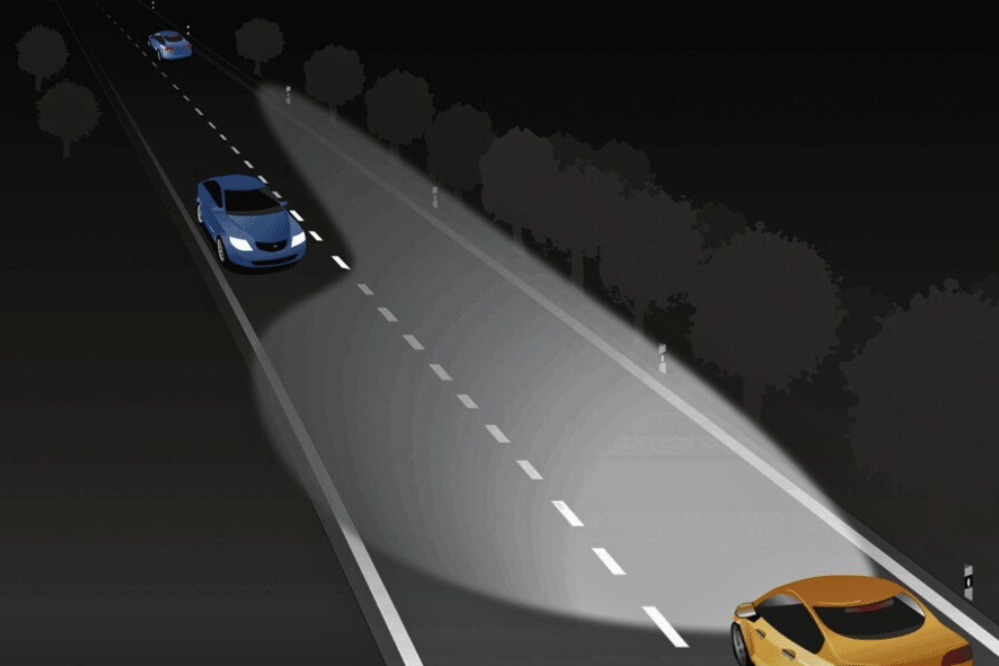Have you ever thought about how different driving can be when you travel to a country where you drive on the left compared to one where you drive on the right? If you are preparing for a trip abroad and find yourself facing this situation, you are in the right place. In this article, we will explore the main differences between right-hand and left-hand driving, providing practical tips to best handle driving in a country with different rules.
Countries with Right-Hand Driving
The main countries where you drive on the left include:
- United Kingdom
- Australia
- Japan
- India
- South Africa
- New Zealand
Main Differences in Right-Hand Driving
Headlight Issue

Beam Differences (RHD - LHD)
Furthermore, the headlights can have different geometries:
- Parabolic Projectors: still present in many vehicles, they can be round or rectangular.
- Ellipsoidal Projectors: characterized by a smaller lens.
- Gas Discharge (Xenon) Projectors: recognizable by their typical blue light.
- LED Headlights: often used as daytime running lights to save energy.
These headlights are always angled to avoid dazzling oncoming vehicles. However, when driving in a country with the opposite driving side, the front headlights can illuminate the road from the "wrong" side, causing visibility problems for other drivers.
Looking at the images, you can immediately see how the light beam behaves differently depending on the type of driving.
-
Right-Hand Driving (RHD): Here, the headlights illuminate more on the left side of the road. This is also done to improve visibility without disturbing other motorists. In the images, the light beam rises to the left.
-
Left-Hand Driving (LHD): In this case, the headlights illuminate more on the right side of the road. This is to better see the edge of the roadway without dazzling oncoming drivers. If you look at the images, you will see that the light beam has an angle that rises to the right.
The problem arises when a car with headlights designed for one type of driving is used in a country with the other type of driving. For example, if you bring a Japanese car to Italy, the headlights will illuminate the wrong side of the road, dazzling other drivers.
When a right-hand drive car is imported to Italy or another left-hand drive country, the headlights need to be adjusted to obtain homologation and drive legally. Very often, these are not homologated and do not pass inspection.

Adjusting Headlights for Imported Cars
At RDCustom, we are experts in this type of modification, we handle adjusting the headlights by installing projectors with the correct light beam and implementing all necessary precautions to ensure maximum safety and compliance. This not only helps you pass inspection and obtain homologation, but also ensures that your car is safe to drive in all road conditions. 
Trust us to adapt your imported car and enjoy the road without worries! Contact us here.
Steering Wheel Position
The most obvious difference when driving in a left-hand drive or right-hand drive country is the position of the steering wheel. In countries where you drive on the left, the steering wheel is on the right side of the vehicle, while in right-hand drive countries, the steering wheel is on the left. Easy, right?
This difference may seem trivial, but it has a significant impact on how we perceive the road and handle the vehicle. Imagine having to maneuver, overtake, and park with the steering wheel positioned on the opposite side from what you are used to: it requires a bit of practice and adjustment.
Roundabouts and Intersections
Roundabouts and intersections also work differently. In left-hand drive countries, traffic in roundabouts flows clockwise. Conversely, in right-hand drive countries, traffic in roundabouts flows counterclockwise, so you must yield to vehicles coming from your left. Always remember to yield in the correct direction!
Tips and Advice
- Do you have a car with grooved glass projectors? Well, know that you can simply cover the wedge sector with black adhesive tape to travel at night without problems even in left-hand drive countries.
- If you have a more modern car with synthetic material projectors, forget about DIY: the chemicals in adhesive tapes could damage the projectors.
- Finally, it is mandatory to adapt the headlights if you travel in countries with the opposite driving direction. If you don't, you risk being illegal.
Curiosity: Historical Origins
Have you ever wondered why some countries chose to drive on the left while others on the right? It all dates back to ancient times. In Roman times, for example, people tended to keep to the left to facilitate combat. This was particularly useful for right-handed knights who could thus use their sword against potential attackers on the right. This practice increased the chances of effective defense and also allowed better coordination and protection during clashes. Over the centuries, these habits remained rooted in the traditions of many countries, thus influencing their current road traffic system.
FAQ - What You Need to Know in Brief
1. Is it difficult to adapt to left-hand driving? No, with a little practice in low-traffic areas, it is quite easy to adapt.
2. What are the main countries with left-hand driving? United Kingdom, Australia, Japan, India, South Africa, and New Zealand are among the main ones.
3. How can I prepare for left-hand driving? Familiarize yourself with the vehicle, use navigation systems, and learn about local road signs.
4. What should I do if I find myself in the wrong lane? Stay calm, try to get back into the correct lane when it is safe to do so, and pay attention to road signs.
5. Why do some countries drive on the left and others on the right? The reasons are historical and cultural. The British Empire influenced many countries to drive on the left, while right-hand driving spread mainly in continental Europe and the Americas.
6. Why do I need to modify the headlights of my imported car? Modifying the headlights is necessary to adapt the light beam to driving in your country and to avoid dazzling other motorists. It is also a legal requirement to obtain homologation and drive on the road.
7. How long does it take to modify the headlights? The time required depends on the car model and the type of modification needed. Generally, the work can be completed in a few days.
8. How much does it cost to modify the headlights of my car? The cost varies depending on the car model and the type of modification required. Contact us for a personalized and non-binding quote.
9. How can I book an appointment? Booking an appointment is simple! You can call us at +39039587612 or send us an email at
 EN
EN  IT
IT 

